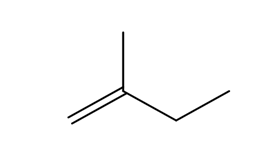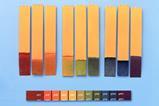They might seem more informal, but when designed and implemented well, MCQs are a powerful tool

Multiple choice questions are a great tool for checking your class’s understanding either through a starter or plenary activity, or within a longer assessment. Students also find them less intimidating than a classic written exam. After all, the answer is there on the page – they just have to work out which one it is. They often (wrongly) think they have at least a one in four chance of getting the answer correct. Multiple choice may also feel more informal or quiz-like, which can help with overcoming the negative behaviours associated with lots of high stakes testing.
In multiple choice questions a question is posed with a selection of possible answers. Between three and five answers is usual, the correct one alongside incorrect ones with varying degrees of plausibility. These incorrect answers are termed ‘distractors’. Multiple choice questions operate in the ‘recognition’ domain of recall; the answer is there to select. As this domain is the most cognitively straightforward, other aspects of the question are often adjusted to make the question more challenging. The level of science demand may be increased or the science given an unfamiliar context. The distractors are often cleverly designed to include common misconceptions and errors.
Download this
Structure and bonding multiple choice quizzes for ages 14–16 as MS Word or pdf, including links to them pre-prepared in the Socrative online quizzing programme
Download this
Structure and bonding multiple choice quizzes for ages 14–16 as MS Word or pdf, including links to them pre-prepared in the Socrative online quizzing programme: rsc.li/2RC2UMT
Types of MCQ
Positive questions and negative questions
The most common framing of multiple choice questions is as positive questions: ‘choose the correct answer’ or ‘which of the following statements is correct?’ Sometimes negative questions are used, specifically asking you to choose the incorrect answer. Students tend to score less well on negative questions. It seems it’s harder to spot an incorrect statement than the other way round.
Simple positive or negative questions are relatively straightforward to construct, especially if you already have a good idea of where students may hold misconceptions or make silly errors.
1) Which of the following formulas represents a substance that contains both ionic and covalent bonds?
A H2O
B NaHSO4
C MgO
D AlCl3
2) Which of the following statements about isotopes of magnesium is incorrect?
A They have the same number of protons.
B They have different mass numbers.
C They have different chemical reactions.
D They have different numbers of neutrons.
Multiple completion questions
In multiple completion questions, one or more of the answers given may be correct and combinations of them are used in a code to determine the final response. They are better used for longer assessments as it takes students time to get used to the code. Ideally the same code should be used for a number of questions. They can also work as one-off lesson starters.
These questions allow a range of different concepts to be assessed in a single question and they can be useful for prompting students to make links between topics.
For question 3, one or more of the options may be correct. Select your answer, A–D, using the following code.
| Code | |||
|
A |
B |
C |
D |
|
1,2, and 3 only correct |
1 and 3 only correct |
2 and 4 only correct |
4 only correct |
3) Look at the molecule pictured below.

Which of the statements is correct?
1. Electrophilic addition with HBr will give 1-bromo-2-methylbutane as the major product.
2. Cyclopentane is a functional group isomer of this molecule.
3. It displays geometric isomerism.
4. It is susceptible to free-radical substitution with chlorine and UV light.
Best answer
The best answer question is difficult to answer because more than one answer might seem true, but the correct answer is the one that is most true. Such questions are used when an exact answer is less likely, and they test critical thinking skills. They can be particularly useful for assessing understanding of practical work.
4) A sample of milk has a pH of 6.8. It is left on a kitchen worktop, after five days its pH is 4.2. Which of the following statements is the best reason for this?
A Carbon dioxide in the air has been dissolved in the milk sample making it more acidic.
B Warm milk has a lower pH than cold milk.
C There was an error in measuring the pH.
D Chemical changes as the milk sours have made the milk more acidic.
Assertion-reason
In these questions two statements are given: sometimes the second statement is a correct explanation of the first and sometimes not.
For question 5 use the following code
| A | Both statements and the second statement is a correct explanation of the first. |
|
B |
Both statements are correct, but the second statement is not a correct explanation of the first. |
|
C |
Only statement 1 correct. |
|
D |
Only statement 2 correct. |
|
E |
Neither statement correct. |
5) Statement 1: The ammonium ion is a pyramidal shape.
Statement 2: There is a lone pair on nitrogen in the ammonium ion.
Workload and MCQs
The major workload issue with multiple choice questions is their design. As the design of the distractor responses is crucial to the efficacy of the assessment, it is worth spending time on careful design. You could usefully do this as a team to begin a staff meeting or INSET session. There are also lots of existing resources that incorporate good multiple choice questions, including databases curated by exam boards and libraries like the BEST resources.
It is of course much easier to mark tests that use multiple choice questions and they lend themselves well to peer and self-assessment. Technology can also be used to speed up the marking process and also allows remote implementation of tests. I have been known to set off quizzes from meetings in London when I am out of school! There are a number of online quizzing platforms and apps, and you probably have your own favourites. I find Socrative works really well for giving rich information and engaging students but not getting them too overexcited, which can happen with the more competitive apps. They are also easily embedded into Google and Microsoft forms.
If you are marking them, I recommend using a pre-prepared response sheet where students shade in the shape for their correct answer. You can cut down your marking time by making a marking sheet: print it, cut out the shape for the correct answer and laminate it. Lay this on top of the student’s sheet, line it up and count the shaded-in shapes visible through the holes. Using this method I managed to mark 55 students’ end of term tests in less than half an hour!
Harnessing potential
Multiple choice questions have great potential for use both in class, as homework and for remote learning. Once designed they can be used for many years to come and sharing them within networks saves time. Why not make a start by trying out our downloadable quizzes designed around the ideas in this article?
Answer key
1) B 2) C 3) C 4) D 5) B
Downloads
MCQs for bonding and structure
Editable handout | Word, Size 0.11 mbMCQs for bonding and structure
Handout | PDF, Size 80.75 kb














3 readers' comments